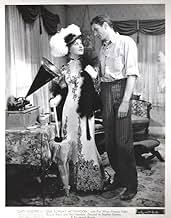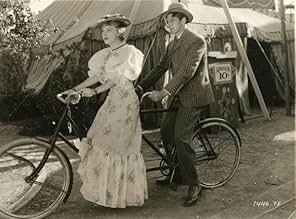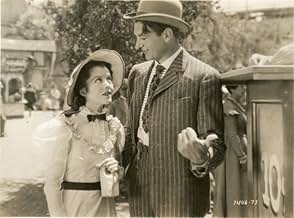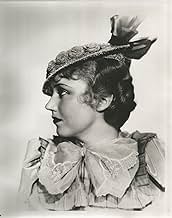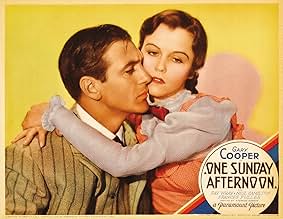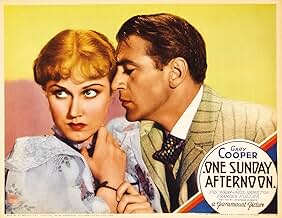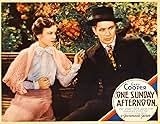Agrega una trama en tu idiomaMiddle-aged dentist Biff Grimes reminisces about his unrequited love for beautiful Virginia Brush and her husband Hugo, his ex-friend, who betrayed him.Middle-aged dentist Biff Grimes reminisces about his unrequited love for beautiful Virginia Brush and her husband Hugo, his ex-friend, who betrayed him.Middle-aged dentist Biff Grimes reminisces about his unrequited love for beautiful Virginia Brush and her husband Hugo, his ex-friend, who betrayed him.
- Dirección
- Guionistas
- Elenco
Clara Blandick
- Mrs. Brush
- (escenas eliminadas)
Bobby Barber
- Man in Greased Pig Contest
- (sin créditos)
James Bradbury Jr.
- Dink's Chum
- (sin créditos)
Ed Brady
- Pig Contest Emcee
- (sin créditos)
James P. Burtis
- Dink Hoops
- (sin créditos)
A.S. 'Pop' Byron
- O'Reilly - Phoenix Foreman
- (sin créditos)
Jack Rube Clifford
- Mr. Johnson - Watchman
- (sin créditos)
Robert Homans
- Officer Charlie Brown
- (sin créditos)
Carmencita Johnson
- Priscilla
- (sin créditos)
Gus Leonard
- Musician
- (sin créditos)
Jim Mason
- Dink's Chum
- (sin créditos)
Russ Powell
- Tuba Player
- (sin créditos)
- Dirección
- Guionistas
- Todo el elenco y el equipo
- Producción, taquilla y más en IMDbPro
Opiniones destacadas
... The Strawberry Blonde.
This film is much darker than "The Strawberry Blonde". Biff Grimes (Gary Cooper), aspiring dentist, has a bad temper, and really loves Virginia (Faye Wray). However when Hugo Barnstead (Neil Hamilton) elopes with her, he marries her friend Mary on the rebound and to save face. Hugo rises to the level of running the factory where Biff works and threatens to fire Biff if he doesn't spy on the other employees. In a face off with Hugo, Biff gets into a scrap with a cop and the cop's gun goes off, striking him in the leg. Biff goes to prison for two years and finishes his dental training through correspondence. Then "one Sunday afternoon" years later Biff encounters Hugo again when he needs to have a tooth extracted. Since he uses gas during such extractions, Biff sees an opportunity for paying Hugo back with murder.
Although this film plays out much like "The Strawberry Blonde" there are a few differences. "The Strawberry Blonde" was much lighter. Hugo Barnstead in that film was played by Jack Carson, who could always manage to inject just a bit of likeability into the cads he played. Cagney doesn't seem as angry in his rendition of Biff as Cooper does, and Cagney's Biff doesn't need to see what has become of his ideal woman (Virginia) years later in order to start appreciating his wife. Also, Cagney was innocent of any intentional wrongdoing in the crime that sent him to prison, where Cooper's Biff Grimes let his temper get the best of him in his downfall.
This film is much darker than "The Strawberry Blonde". Biff Grimes (Gary Cooper), aspiring dentist, has a bad temper, and really loves Virginia (Faye Wray). However when Hugo Barnstead (Neil Hamilton) elopes with her, he marries her friend Mary on the rebound and to save face. Hugo rises to the level of running the factory where Biff works and threatens to fire Biff if he doesn't spy on the other employees. In a face off with Hugo, Biff gets into a scrap with a cop and the cop's gun goes off, striking him in the leg. Biff goes to prison for two years and finishes his dental training through correspondence. Then "one Sunday afternoon" years later Biff encounters Hugo again when he needs to have a tooth extracted. Since he uses gas during such extractions, Biff sees an opportunity for paying Hugo back with murder.
Although this film plays out much like "The Strawberry Blonde" there are a few differences. "The Strawberry Blonde" was much lighter. Hugo Barnstead in that film was played by Jack Carson, who could always manage to inject just a bit of likeability into the cads he played. Cagney doesn't seem as angry in his rendition of Biff as Cooper does, and Cagney's Biff doesn't need to see what has become of his ideal woman (Virginia) years later in order to start appreciating his wife. Also, Cagney was innocent of any intentional wrongdoing in the crime that sent him to prison, where Cooper's Biff Grimes let his temper get the best of him in his downfall.
One Sunday Afternoon is an example of what movie studios used to do with total professionalism - in the space of a few months, use a Broadway play as the template to make a movie. One Sunday Afternoon opened on Broadway on February 15, 1933; the movie went into production at Paramount in May 1933 and was released on September 1, 1933, while the original play was still at the Little Theater. Grand Hotel is another example of a Broadway play becoming a movie in a relatively short time.
Warner Bros. turned the play Arsenic and Old Lace into a movie after the play was a hit on Broadway, but by then, the play's producer knew the score. One Sunday Afternoon closed on Broadway in November 1933, a closure that probably was sped up by competition from the movie. As a condition of the sale of movie rights, the movie Arsenic and Old Lace, made in 1941, could not be released until the play it was based on closed on Broadway. That was in 1944.
Back to One Sunday Afternoon, the movie. As with many movies made during the Depression, this movie has a grim edge to it. Although things work out, all the leads have rough times of it. Fay Wray is cast against her usual role, playing a mean person. Gary Cooper is no hero, just a guy who gets jammed by people he trusted. Frances Fuller (Amy Lind) does not change much during the movie, she always believes in Biff Grimes (Cooper). She made one more movie in Hollywood as a lead character before vanishing until some television roles over 15 years later, so she did not have a chance to be typecast.
The end result of Paramount's production is a movie that shows what a struggle life is, and how people can change along the way. Instead of cheerful memories of a time gone by, which the title implies, you have scenes such as Gary Cooper returning from prison to meet Amy in Avery's Park, an amusement park that closed and fell into disrepair while Cooper was in prison.
One Sunday Afternoon is a slice of real life, a movie that deals with hard times for some ordinary (but very good looking) people.
Warner Bros. turned the play Arsenic and Old Lace into a movie after the play was a hit on Broadway, but by then, the play's producer knew the score. One Sunday Afternoon closed on Broadway in November 1933, a closure that probably was sped up by competition from the movie. As a condition of the sale of movie rights, the movie Arsenic and Old Lace, made in 1941, could not be released until the play it was based on closed on Broadway. That was in 1944.
Back to One Sunday Afternoon, the movie. As with many movies made during the Depression, this movie has a grim edge to it. Although things work out, all the leads have rough times of it. Fay Wray is cast against her usual role, playing a mean person. Gary Cooper is no hero, just a guy who gets jammed by people he trusted. Frances Fuller (Amy Lind) does not change much during the movie, she always believes in Biff Grimes (Cooper). She made one more movie in Hollywood as a lead character before vanishing until some television roles over 15 years later, so she did not have a chance to be typecast.
The end result of Paramount's production is a movie that shows what a struggle life is, and how people can change along the way. Instead of cheerful memories of a time gone by, which the title implies, you have scenes such as Gary Cooper returning from prison to meet Amy in Avery's Park, an amusement park that closed and fell into disrepair while Cooper was in prison.
One Sunday Afternoon is a slice of real life, a movie that deals with hard times for some ordinary (but very good looking) people.
"One Sunday Afternoon" is a charming and little-known piece of Americana, the first filmization of James Hagan's play about a dentist named Biff Grimes (Gary Cooper) who has long tried to revenge on his old friend Hugo Barnstead (Neil Hamilton) for marrying Grimes' girl Virginia (Fay Wray) and leaving him with the charming and devoted Amy (Frances Fuller). The film opens with Grimes and his pal Snappy Downer (Rascoe Karns) singing and drinking. Barnstead shows up Grimes' home to get this tooth pulled. Grimes puts him on nitrous oxide gas, and then the film dissolves into a flashback as Grimes remembers their past, providing him with a motive for revenge.
"One Sunday Afternoon" was remade in 1941 by Warner Bros. and Raoul Walsh into a timeless and unforgettable classic, "The Strawberry Blonde", starring James Cagney, Olivia de Havilland, and Rita Hayworth. Walsh's version is infinitely superior, but "One Sunday Afternoon" is worthwhile for Gary Cooper's superb performance.
"One Sunday Afternoon" was remade in 1941 by Warner Bros. and Raoul Walsh into a timeless and unforgettable classic, "The Strawberry Blonde", starring James Cagney, Olivia de Havilland, and Rita Hayworth. Walsh's version is infinitely superior, but "One Sunday Afternoon" is worthwhile for Gary Cooper's superb performance.
The film begins in a dental office, as the dentist, Biff (Gary Cooper), talks to a friend (Roscoe Karns) about this relationship with Hugo (Neil Hamilton) back in the Gay 90s when they had been friends. This is instigated when Hugo comes to the office and sees Biff for the first time in decades. Hugo needs a tooth pulled and while he is sedated with gas, Biff recalls their past when they were both ardently pursuing a pretty young lady (Fay Wray)--while pretty much ignoring her more plain but much sweeter friend (Frances Fuller). Through the course of the film, Hugo stabs his supposed friend in the back again and again.
This movie is the original--with remakes in 1941 (THE STRAWBERRY BLONDE) and 1948 (ONE Sunday AFTERNOON). While I rarely prefer remakes, I must say that the 1941 version is much more watchable and fun. Part of this is because the 1933 version is so very, very quiet--with very little music to help set the mood. Also, the whole mood of the 1933 film is more somber and the story a bit more direct and "bare bones" in style. Also, while I like Gary Cooper films, for a comedy like this one, Cagney was better and the supporting actors he had were also superior and gave THE STRAWBERRY BLONDE so much more energy. This film is still well worth seeing, but the 1941 film has a more polished plot, better characters and the full Warner Brothers package (wonderful and first-rate production values) that this Paramount film lacks.
This movie is the original--with remakes in 1941 (THE STRAWBERRY BLONDE) and 1948 (ONE Sunday AFTERNOON). While I rarely prefer remakes, I must say that the 1941 version is much more watchable and fun. Part of this is because the 1933 version is so very, very quiet--with very little music to help set the mood. Also, the whole mood of the 1933 film is more somber and the story a bit more direct and "bare bones" in style. Also, while I like Gary Cooper films, for a comedy like this one, Cagney was better and the supporting actors he had were also superior and gave THE STRAWBERRY BLONDE so much more energy. This film is still well worth seeing, but the 1941 film has a more polished plot, better characters and the full Warner Brothers package (wonderful and first-rate production values) that this Paramount film lacks.
I was pleasantly surprised that this film was aired on Turner Classic Movies. In The Films of Gary Cooper when Warner Brothers purchased the rights from Paramount for James Cagney's remake of One Sunday Afternoon entitled The Strawberry Blonde, it says that the Paramount film itself was purchased and buried. The author said that the original might not see the light of day again. It was interesting to see this version and compare it with Cagney's.
This is a much darker version and probably a lot closer to what you saw on Broadway. One Sunday Afternoon closed that year of 1933 after running for 332 performances, very nice indeed for the Depression era audience and pocketbook. Lloyd Nolan originated the role on stage and I'm sure it must have been closer to Cagney's interpretation.
I can see Lloyd Nolan playing this part a lot easier than Gary Cooper. For one thing, Cooper just was not an urban type. In fact two of his most successful roles in Frank Capra's Mr. Deeds Goes to Town and Meet John Doe he was the country boy out of his environment in the big city. But Lloyd Nolan was not a movie name, in fact he'd make his screen debut shortly.
The story structure is still the same, Gary Cooper while about to pull a tooth of his rival Neil Hamilton thinks back to the old days with Hamilton when they were both courting Fay Wray. Fay had a girl friend played by Frances Fuller who was all aglow over Cooper, but he couldn't see her at all. When Hamilton and Wray elope Cooper literally settles for second best and marries Fuller.
The Strawberry Blonde was done with so much lighter a touch. Here the Hamilton character is far more directly responsible for Cooper landing in prison. He's a much nastier guy, much nastier than lovable blowhard Jack Carson was. In fact Hamilton commits outright perjury to land Cooper in jail where he finishes his correspondence course to become a dentist.
In fact Jack Carson played the same part again in yet another version that reverted back to the same title and starred Dennis Morgan in the Cooper/Cagney lead. That one was done as a musical and didn't get nearly the acclaim that the other two did.
There's not much to choose from with Frances Fuller and Olivia deHavilland. Both are the good girls of the plot and those were the kind of parts deHavilland was looking to ditch. But whereas Rita Hayworth turns out to be a shrew, Fay Wray is a tramp. Remember this was before the Code.
In this case the remake was better. The story required a much lighter touch than Paramount gave it. Still a miscast Gary Cooper gives it his best shot and One Sunday Afternoon is still entertaining.
But if you view this side by side with The Strawberry Blonde, I'm betting you'll what Warner Brothers did so much better.
This is a much darker version and probably a lot closer to what you saw on Broadway. One Sunday Afternoon closed that year of 1933 after running for 332 performances, very nice indeed for the Depression era audience and pocketbook. Lloyd Nolan originated the role on stage and I'm sure it must have been closer to Cagney's interpretation.
I can see Lloyd Nolan playing this part a lot easier than Gary Cooper. For one thing, Cooper just was not an urban type. In fact two of his most successful roles in Frank Capra's Mr. Deeds Goes to Town and Meet John Doe he was the country boy out of his environment in the big city. But Lloyd Nolan was not a movie name, in fact he'd make his screen debut shortly.
The story structure is still the same, Gary Cooper while about to pull a tooth of his rival Neil Hamilton thinks back to the old days with Hamilton when they were both courting Fay Wray. Fay had a girl friend played by Frances Fuller who was all aglow over Cooper, but he couldn't see her at all. When Hamilton and Wray elope Cooper literally settles for second best and marries Fuller.
The Strawberry Blonde was done with so much lighter a touch. Here the Hamilton character is far more directly responsible for Cooper landing in prison. He's a much nastier guy, much nastier than lovable blowhard Jack Carson was. In fact Hamilton commits outright perjury to land Cooper in jail where he finishes his correspondence course to become a dentist.
In fact Jack Carson played the same part again in yet another version that reverted back to the same title and starred Dennis Morgan in the Cooper/Cagney lead. That one was done as a musical and didn't get nearly the acclaim that the other two did.
There's not much to choose from with Frances Fuller and Olivia deHavilland. Both are the good girls of the plot and those were the kind of parts deHavilland was looking to ditch. But whereas Rita Hayworth turns out to be a shrew, Fay Wray is a tramp. Remember this was before the Code.
In this case the remake was better. The story required a much lighter touch than Paramount gave it. Still a miscast Gary Cooper gives it his best shot and One Sunday Afternoon is still entertaining.
But if you view this side by side with The Strawberry Blonde, I'm betting you'll what Warner Brothers did so much better.
¿Sabías que…?
- TriviaWhen Biff asks for a package of Sen-Sen at the pool hall, audiences at the time would have known he was buying a popular brand of breath freshener. It was produced from the late 1800s until 2013.
- ErroresTodas las entradas contienen spoilers
- Citas
Virginia 'Virgie' Brush Barnstead: How'd you know my name's Virginia?
Dr. Lucius Griffith 'Biff' Grimes: That's for me to know and you to find out.
- ConexionesVersion of ¡Ay qué rubia! (1941)
- Bandas sonorasOn a Sunday Afternoon
(1902) (uncredited)
Music by Harry von Tilzer
Lyrics by Andrew B. Sterling
Played during the opening credits and at the end
Selecciones populares
Inicia sesión para calificar y agrega a la lista de videos para obtener recomendaciones personalizadas
Detalles
- Fecha de lanzamiento
- País de origen
- Idioma
- También se conoce como
- Dr. Grimes hämnd
- Locaciones de filmación
- Productora
- Ver más créditos de la compañía en IMDbPro
- Tiempo de ejecución1 hora 25 minutos
- Color
- Relación de aspecto
- 1.37 : 1
Contribuir a esta página
Sugiere una edición o agrega el contenido que falta

Principales brechas de datos
By what name was One Sunday Afternoon (1933) officially released in India in English?
Responda

